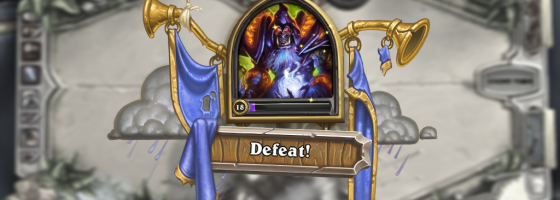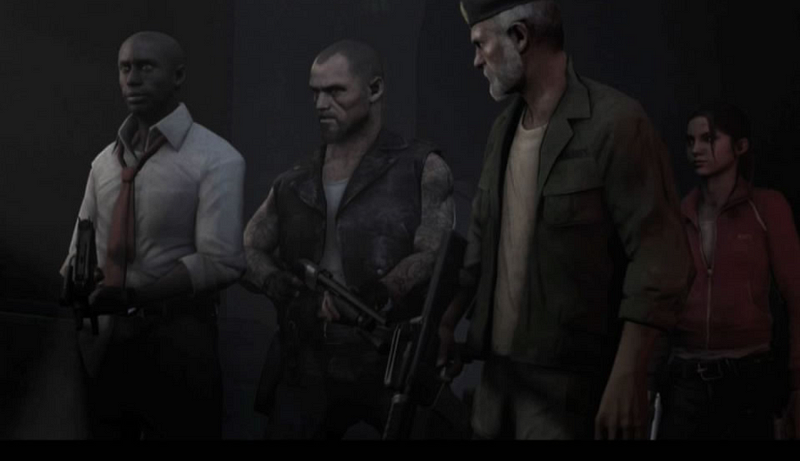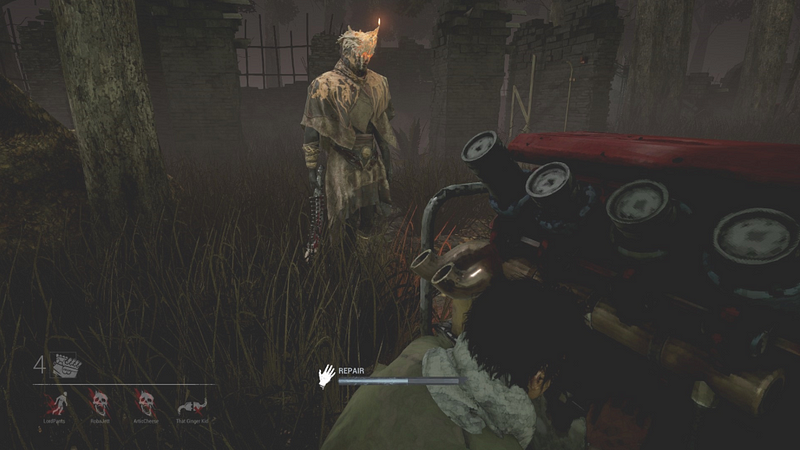Trending
Opinion: How will Project 2025 impact game developers?
The Heritage Foundation's manifesto for the possible next administration could do great harm to many, including large portions of the game development community.

Featured Blog | This community-written post highlights the best of what the game industry has to offer. Read more like it on the Game Developer Blogs or learn how to Submit Your Own Blog Post
Asymmetrical game design can lead to some of the most unique experiences around, but it's also a never-ending challenge for designers to get even part of the way to being balanced.

When it comes to delivering unique multiplayer experiences, asymmetrical game design is one of the best… and also the worst. Figuring out how to create and balance games when nothing is meant to be balanced is a game design challenge.

Most multiplayer games today are built on partial asymmetry between players. That means each player is operating from the same basic rules or gameplay elements, with some variations to spice things ups. Fighting games, team-based shooters, and even MOBAs would be examples.
Partial asymmetry allows the designer to balance the gameplay around a single gameplay loop and make tweaks accordingly. Working from a baseline like this allows the designer to think of ways of “stretching” the design to create different characters, builds, etc.
Full asymmetry is when you have players using completely different gameplay loops and playing against each other at the same time. In this regard, I can only think of a handful of games that went this route: Left 4 Dead, Natural Selection, Evolve, and Dead by Daylight (I’m sure there are indie games out there, but I can’t remember any off the top of my head.)
Full asymmetric play provides a different experience for both groups. Typically group A has to do some kind of task while group B is attempting to stop them. In Natural Selection’s case, both groups are trying to kill the other, but they have different gameplay elements to make use of.
Both forms of asymmetry can create unique experiences that cannot be easily copied. However, the work that goes into making these titles “feel” balanced can be never-ending.
There is a lot to unpack when we talk about asymmetrical gameplay, and I don’t think we’re going to get to all of it in a single post. The biggest challenge is one that can throw a lot of developers for a loop — how do you balance choices that have no comparable elements?
When you play a CCG that has different factions/builds, each build purposely has choices and options unique to it. If I’m playing Hearthstone, I don’t expect the mage to start buffing cards like the paladin and vice-versa. This is why so much work is done when it comes to balancing the stats of unit cards and mana cost, because they’re universal across all factions.
Unique elements are different, as there is no 1:1 relation between options. From a design standpoint, is it more beneficial to teleport around or summon minions? The problem with that question is that trying to answer it in a vacuum is impossible.
This problem becomes more prevalent when we’re talking about games with full asymmetrical play. Both Left 4 Dead and Dead by Daylight have two different gameplay loops going on at the same time. Changing the stats or dynamics of one group can be seen as making it less fun for the other.
Ultimately, the answer to even trying to balance asymmetrical design comes down to the response that one group has over the other.
One of the basic tenets when it comes to trying to balance comes down to the effectiveness of it. If there’s a tactic that wins every time that’s easy to pull off, the game will be viewed as imbalanced On the other hand, if there is a strong tactic that requires a lot of work to set up that is successful a lot, then that might be okay to leave in as a reward for learning the game.
You cannot balance everything perfectly in asymmetrical design — hence the term “asymmetrical.” What you’re looking for are “answers,” and by answers I mean if each group has the means of dealing with the other group.

you cannot balance asymmetrical design with just numbers.
This is very important when it comes to CCG design. If one faction or style has a card type or ability that no other faction can counter, then that’s going to be looked at as a major Meta-game point. Like-wise, if one faction’s special ability or unique element is viewed as the best, then players are going to gravitate towards it or its counters.
In Left 4 Dead, one of the biggest issues design-wise in the first game was that the infected team was too weak when it came to fighting a well coordinated survivor team. The infected had no answers for when the survivors were hunkered down — making finales very frustrating to play. Valve’s answer in Left 4 Dead 2 was to introduce special infected that were designed to break up a group: the spitter, jockey, and charger.
Simply raising the stats on the other infected wouldn’t have done anything in this situation, as the problem wasn’t numerical, but design-related. With that said though, there is one other aspect that we need to discuss.
One of the hardest parts of asymmetrical design when it comes to competitive titles is the fact that you’re dealing with different skill levels. There is a big difference in terms of play style when you have two groups of novices, one group of experts, or everyone is an expert. Something may not be viewed as balanced when shown to newcomers, but is acceptable at high level play.
This is where the importance of tutorials and matchmaking come in. You never want experts and newcomers to be grouped together in a quick match, because neither group is going to have a good time. Another issue is that if you make things easier for new players that could lead to imbalances at the high-level play.
Dead by Daylight is a curious case here. Playing at the low levels, the killer has a major advantage against new players. However, a team of expert survivors with fully upgraded perks and items has a far easier time.

Dead by Daylight can play differently based on the skill levels of everyone involved
Pulling off a risky maneuver that wins the game should not be trivialized, but again, it all comes back to what answers are in the game. Nobody should feel like they’re losing due to issues beyond their control, and it can take while for players to grow at an asymmetrical game.
You also need to pay attention to games that assign a “leader” to a group, and give players the option to decline. One of the most stressful things when I played Natural Selection 2 was being assigned the commander role and having no idea what I was doing.
Asymmetrical game design is very hard to pull off, and again why so few games go this route. When it works like with Left 4 Dead, it can provide a multiplayer experience that is unique to itself. Even if you’re not going for multiplayer, you still need to figure out how to balance the imbalance-able, and there are no easy answers.
To end this post with: Can you think of some great examples of asymmetrical play, and some not so great ones?
Read more about:
Featured BlogsYou May Also Like